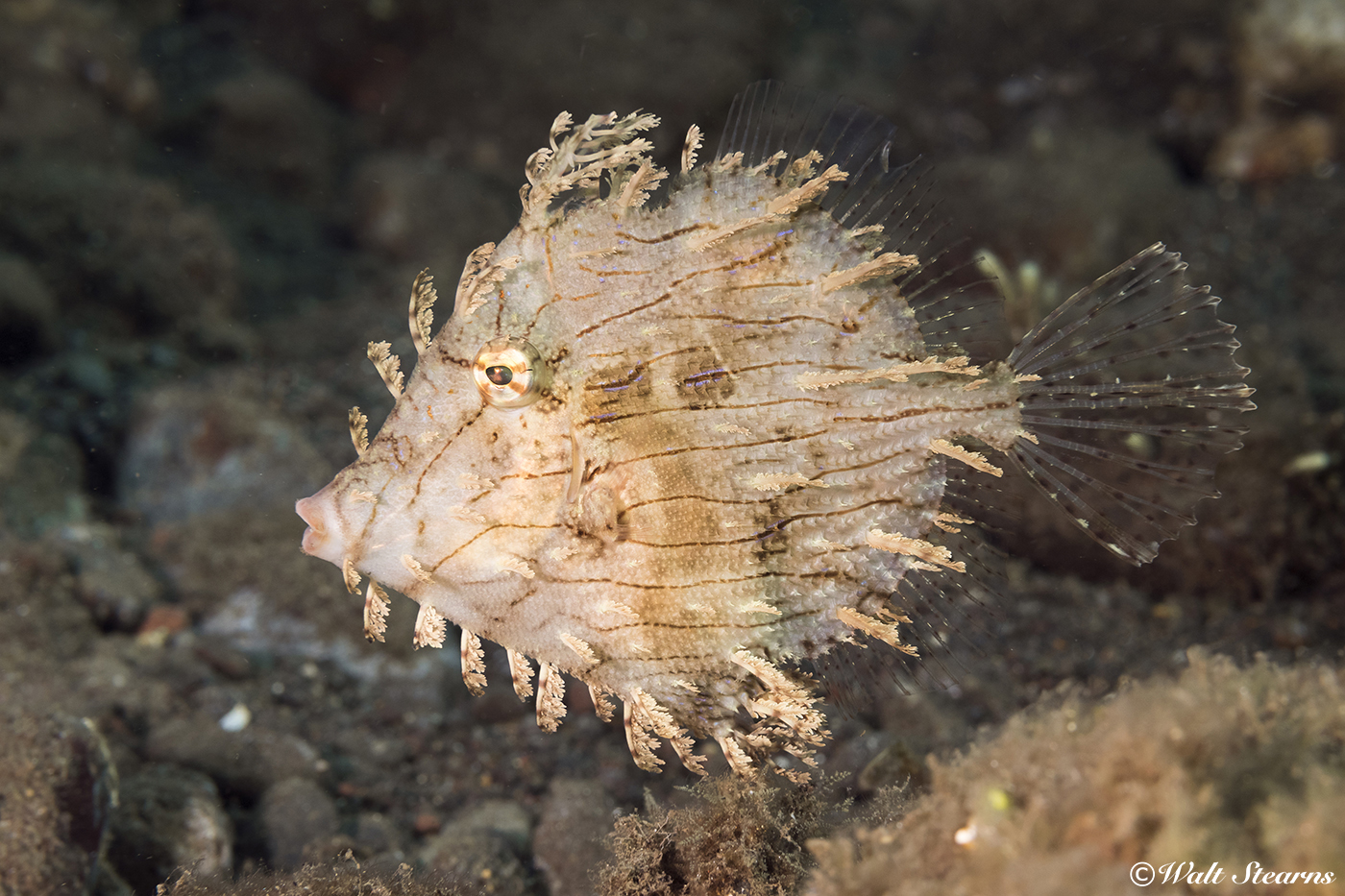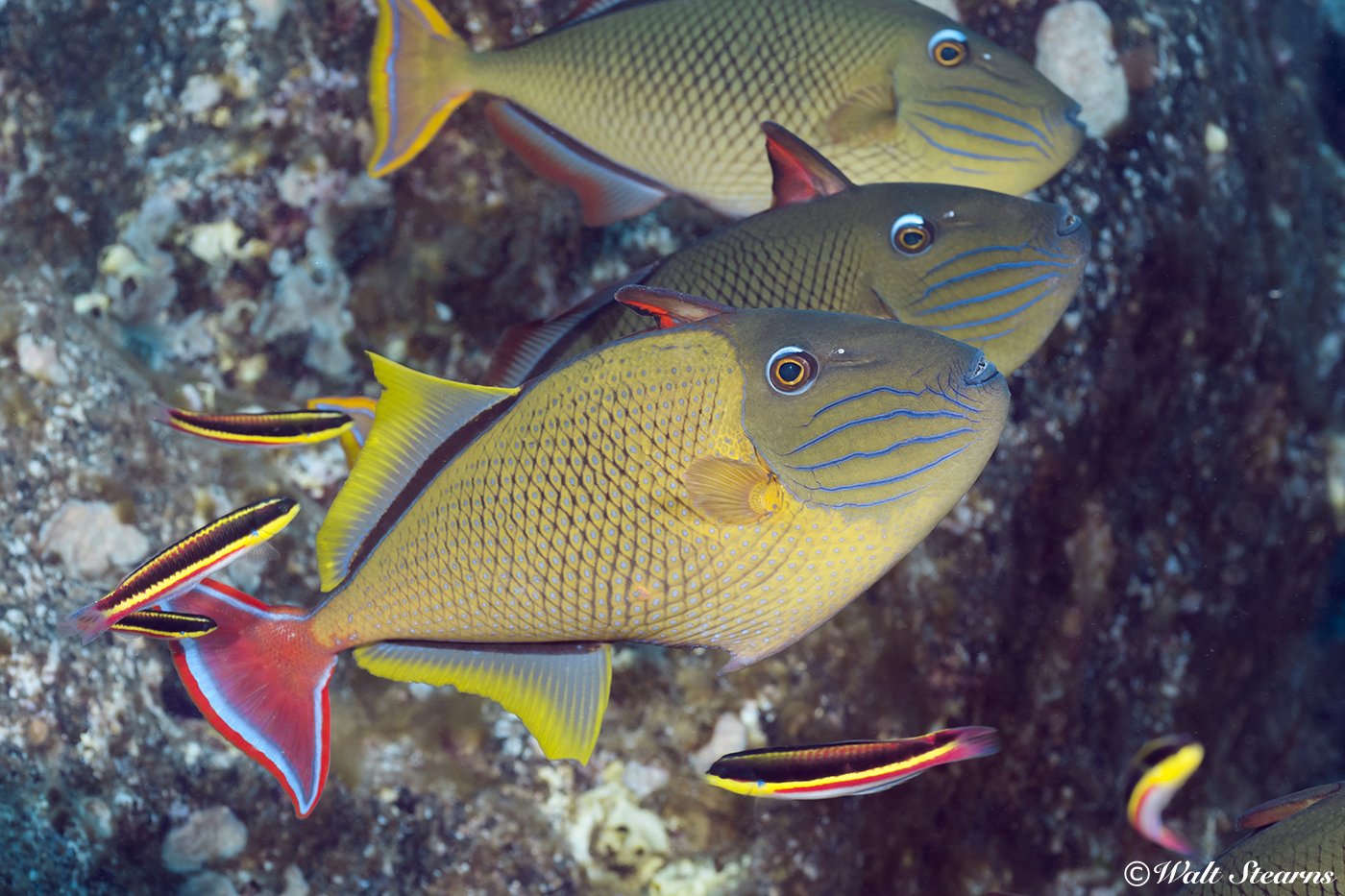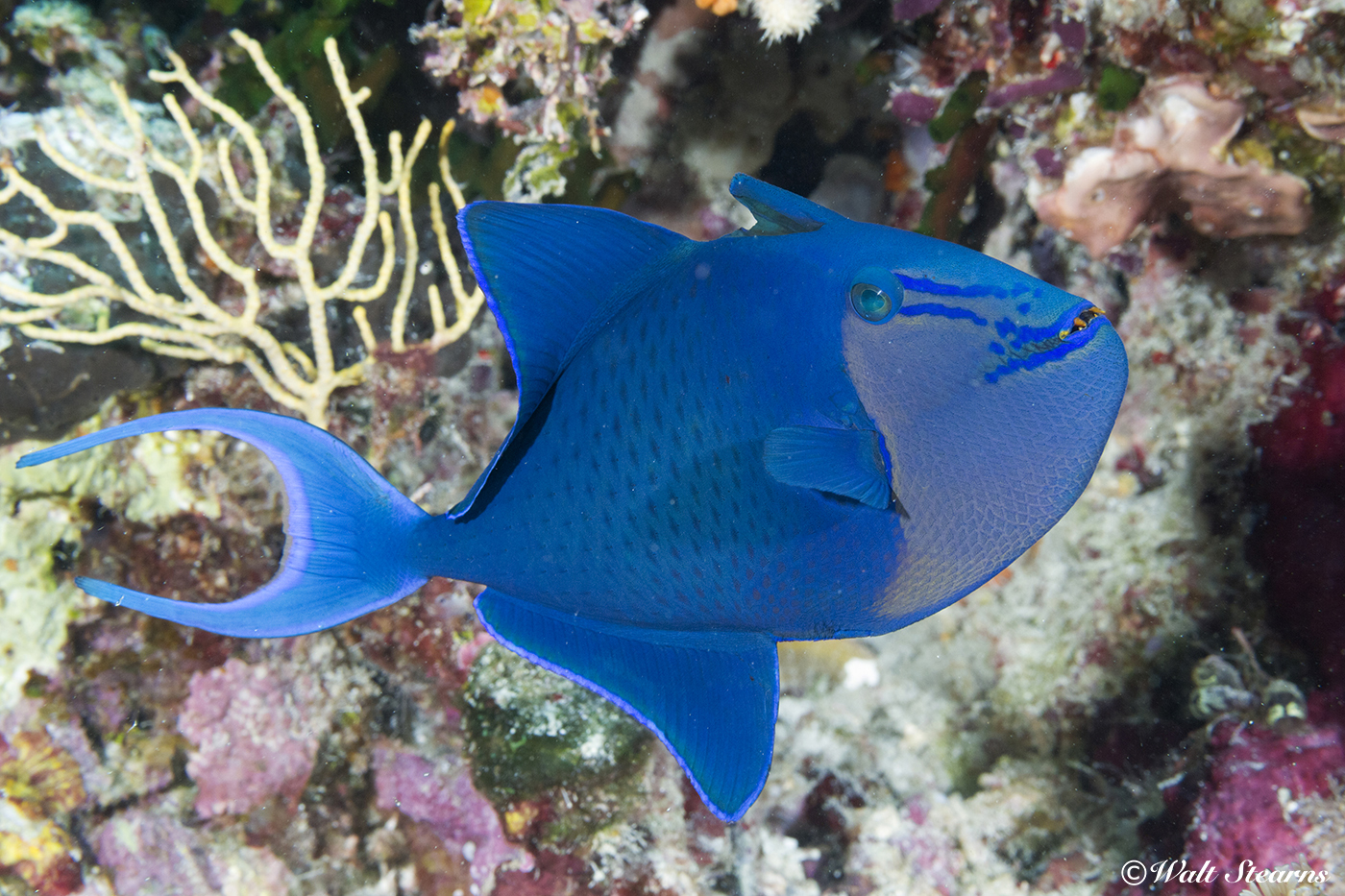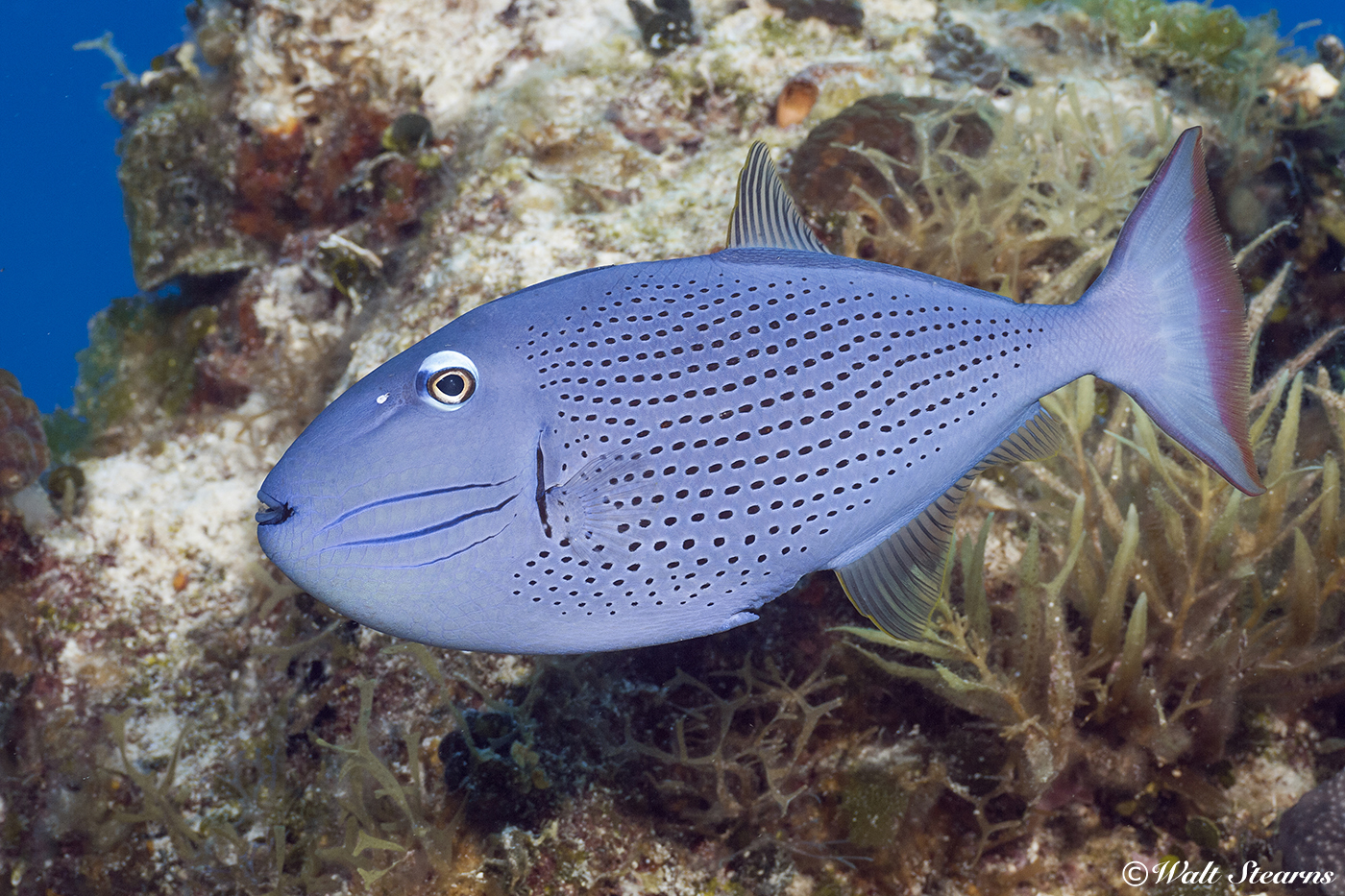
A closer look at the fascinating habits of triggerfish
Divers love to seek out rare and elusive marine life. But sometimes, the most interesting fish are easy to find, and watching them can be equally fascinating. This is certainly the case for members of the triggerfish family. When you first find one flutter-swimming through the coral rubble, it might seem like there's nothing interesting going on. But follow along for a while, and things could get interesting. Just don’t get too close, because these fish really like their personal space.

Designed for defense
There are more than three dozen species of triggerfish swimming in the tropical and subtropical sea around the world. They range in size from a few inches to more than three feet long and are often covered in spots or colorful geometric patterns. You can tell a trigger by its diamond-shaped body, large head, smallmouth and distinctive fin pattern. These fish have relatively small tails, which are used only to generate short bursts of speed. The rest of the time, triggers propel themselves with rapid undulations of their enlarged anal and dorsal fins, creating a motion which resembles the fluttering wings of a bird in flight. This technique doesn’t generate much speed, but it is ideal for the sort of precise slow-speed maneuvers these fish favor when feeding.

Clever Defenses
Because triggers aren't very good at out-swimming predators, they rely on built-in defenses. They grow tough skins with non-overlapping, diamond-shaped scales that are the biological equivalent of armor plating. Their gills are hidden behind a thick growth of protective skin, as are the pelvic fins, which are fused into a single spine. These adaptations make a triggerfish a hard meal to bite into, and there's one more trick that makes them even harder to swallow. Up top, the trigger’s dorsal fin is reduced to just three spines, which are usually retracted. If threatened, the trigger will raise these spines, using the shorter second spine to lock the large and quite sharp leading spine in place. This creates a rigid vertical spike that will discourage a predator from biting down on a triggerfish, or from trying to swallow it. Triggers can also use the spines like an anchor, wedging into a tight crevice in the reef and raising their spines to lock themselves in place and resist being pulled from their refuge. The only way to defeat this strategy would be to depress the second spine to unlock the first, much like pulling the trigger on a gun. It is this unlocking motion that has inspired the triggerfish's name.


Feeding on the Hard Stuff
Triggerfish have powerful jaws and strong teeth, which they use to crush and grind hard things. Divers will often find these fish in a head-down position, searching the sea floor for slow-moving bottom dwellers such as mollusks, crustaceans, sea urchins, worms and brittle stars. Their teeth can crush a shell, and some species also munch on corals, sponges or beds of pearl oysters. A lesser number of triggerfish will sometimes nibble on drifting plankton or go full vegan and graze on algae.
Most triggers are voracious eaters, devoting much of their daily routine to finding the next meal. It's common to find them rooting about in sand or coral rubble, digging out crabs and worms by whisking away debris with their fins, or blasting jets of water from their mouth. They sometimes use their teeth to grab and move chunks of coral to reveal any tasty morsel that is hiding below. These behaviors lead marine biologists to believe that triggers are more intelligent than the average fish and that they are able to learn from previous experiences. If you find a triggerfish feeding, stick around for a while, because when they start turning up the bottom in search of a meal, their excavations may draw smaller fish, which follow along to feast on the leftovers.

Protective Parents
Many triggerfish are solitary creatures, working solo as they cruise reefs, grass beds and rubble-covered sea floor in search of food. Some species are a bit more social, moving about as a loose group, but not really working together. The one thing that really brings triggers together is sex. When the moon and tides are right, males and females pair up to spawn and then become some of the most attentive parents in the fish world.
Family life begins when male stakes out a likely site for spawning. He will use his fins and mouth to excavate a shallow crater into the sand or rubble. Some species of triggers will build multiple nests and spawn with more than one female. But whether monogamous or keeping a harem, a male will usually encourage the female to get involved the home building process. This pre-spawning construction and courtship behavior begins with the male and female touching fins and bumping bellies. If all seems right, they will then join forces to move rubble about and blow water jets to shape the nest. Once everything is in order, and the spawning is consummated, the female will deposit tens of thousands of tiny fertilized eggs in the nest. She will remain in close proximity until they hatch into larvae, often roll, fan, and blow water on the eggs to provide oxygen to the embryos.


Triggerfish mothers are fiercely protective of their brood, and will aggressively defend the nest from any would-be egg munchers. Male triggers also stand guard, but usually roam a bit farther from the nest, providing the first line of defense, or in cases of having multiple mates, to protect all his progeny. This assertive approach to child rearing has earned triggers a well-deserved reputation for aggressive behavior. A nest guarder will not hesitate to run off anything that enters its territory—including divers and snorkelers. And thanks to their shell-crunching teeth, a trigger could actually take a fairly nasty nip out of an arm or leg—though this is a very rare occurrence. More often, they go after a diver’s fins and will stay on the attack until the human intruder retreats. When confronted by a belligerent triggerfish, it helps to know that their territorial defense zone extends upward from the nest like an inverted cone. As a result, swimming away rather than upward is the best retreat strategy if you come in contact with a belligerent parent.

A Look-A-Like Relative
If you come across a fish that looks sort of, but not quite like a trigger, it is probably a filefish. These are close relatives of the trigger, and share the same rhomboid-shaped bodies and elaborate color patterns. Filefish also have the same protected gills and spike adaptation of triggers, but they cannot lock their spines; have softer, simpler fins and shorter, fan-shaped tails. They have scales, but these are usually so some small the look more like tough skin. Filefish also like to keep to themselves, though they may sometimes swim in pairs. Their diets can include everything from invertebrates such as tunicates, gorgonians, and hydrozoans to corals and seaweeds. They are most common in the upper portions of the reef, but may also venture into grass beds and estuaries. One of the largest varieties is the scrawled filefish, which can grow to lengths of more than three feet, and is found in the Indo-Pacific.


Worth of Protection
Because of their bright coloration, many species of triggerfish and filefish are prized for the aquarium trade. The high prices these fish command has tempted collectors to gather even threatened species from the wild. Researchers are working to raise triggerfish in captivity to reduce the pressure on wild populations, but until that happens, the best protection for these colorful animals is the safe haven found in the protected marine preserves that divers help support with their business and contributions to marine parks.
